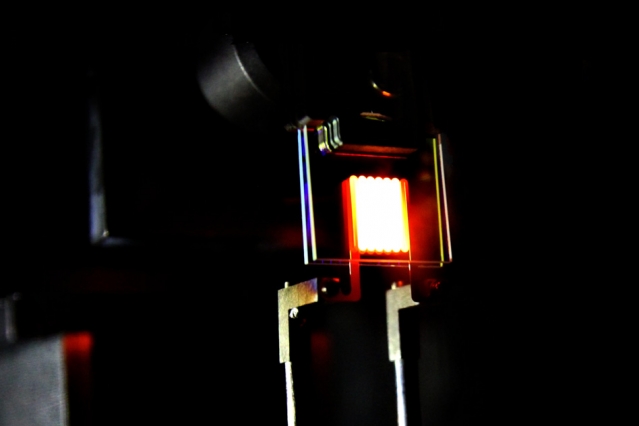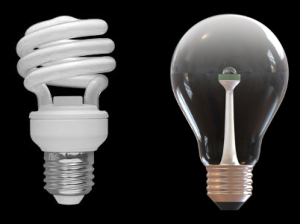Better than LED’s? Boston Startup, MIT Promise LED Efficiency with Incandescent Color (Science!)
| . Posted in Did you know?, News, repairs - 0 Comments
LED’s have come a long way. They are energy efficient, cheap, and can now emit a warm yellow light. But if you still prefer the color of incandescents, or if you want even greater efficiency, you need to know about light bulbs being developed by a startup called Finally. You should also keep an eye on rival technology being developed at the Massachusetts Institute of Technology.

Proof-of-concept by MIT researchers Marin Soljacic, John Joannopoulos, Gang Chen, Ivan Celanovic, Ognjen Ilic, and Peter Bermel.
Finally is a Boston-based startup making a better version of Compact Fluorescent Lightbulbs (CFL’s). CFL’s are much more energy efficient than incandescent bulbs. These Finally bulbs show off skin tones and red’s better than LED’s, according to their own marketing material and a CNET review.
Meanwhile at MIT, researchers have found a way to make incandescents emit almost no waste heat.
How Does an Incandescent Light Bulb Work?
An incandescent bulb passes a current through a tungsten filament, which gets hot and glows. This is called “incandescence”. It wastes a lot of the energy in the form of infrared “heat” radiation that we cannot see. It’s the same kind of radiation as the sun, or an electric stovetop glowing red, or a very hot poker glowing white. All very hot things are incandescent.
How are the Finally CFL’s Different from Other Light Bulbs?
The Finally CFL’s are unlike incandescent bulbs but share some similarities with LED’s.
A “light emitting diode” (LED) passes a current through a special electrical component called a semiconductor. The semiconductor is like a water wheel: the electrons flow from the top to the bottom. Just as water gives energy to the wheel, the electrons give energy by shining in one of the colors of the rainbow. Which color depends on how far they fall (how big is the water wheel). This effect is called “electroluminescence,” totally different from incandescence.
CFL’s contain a special fluorescent gas that glows in a magnetic field. When a current runs through a loop, a magnetic field is created and the gas glows.
In both LED’s and CFL’s, the versions we use in our homes emit ultraviolet light. But we can’t see ultraviolet light! Inside the CFL’s and LED’s is a white coating. This absorbs the ultraviolet and glows white. This is called “phosphorescence.” The glowing chemical reaction is the reason you can sometimes see an LED or CFL continue glowing pale green even after you have turned it off.
CFL’s use a middling amount of energy compared to LED’s (low) and incandescents (high).
What’s the Point of Finally Light Bulbs?
Finally is positioning itself against incandescent bulbs. Currently, they are neither cheaper nor longer-lasting than LED’s. This may change over time. Their primary advantage is supposed to be color.
The CNET article doesn’t recommend these Finally bulbs unless you are very particular about the color of your light. If you want to support a Boston startup, save some energy, and look better, give Finally a try.
What has MIT Invented?
Meanwhile, at MIT, they are using nanotechnology to create a better incandescent. They still use a filament that glows hot like the sun. But the filament is surrounded by a special artificial opal (like the gemstone) that takes all the infrared heat radiation and pours it back into the filament. Theoretically, this approach should use one-half of the energy of an LED, or roughly 5% of the energy of a traditional incandescent.
The Finally bulbs are commercially available. The MIT incandescents are some time away from commercialization.





